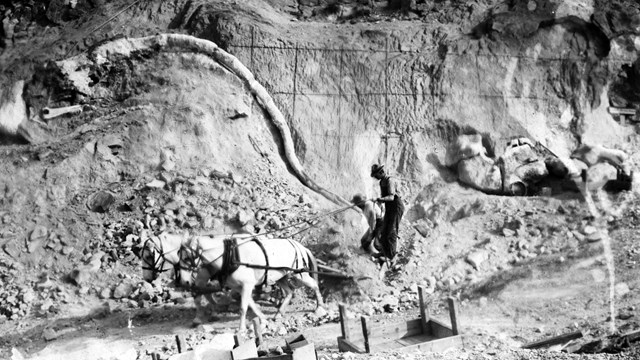
NPS / Jake Holgerson Why Study Paleontology?Paleontologists are the scientists who study ancient life. They learn what they know mostly through close examination of remnants of ancient life preserved in rock, known as fossils. Studying fossils helps scientists answer some crucial questions about life in the distant past:
Paleontology at DinosaurFor over 100 years, visitors have come to Dinosaur to watch excavations and learn more about ancient life. Click through the links below to discover more about paleontology and related topics here at Dinosaur National Monument.
Dinosaurs of Dinosaur
In a time before grass and flowers, before bees and butterflies, and even before the Rocky Mountains rose, dinosaurs called this place home. 
Dinosaur Contemporaries
Not all creatures in the Mesozoic world were dinosaurs. Scientists have found several small species that shared the dinosaurs' rich habitat. 
Museum Collections
Dinosaur has over 45,000 objects catalogued in its museum collections. They play a vital role in our understanding of the park's history. 
The Historic Carnegie Quarry
In 1909, paleontologist Earl Douglass uncovered the first bones of the Carnegie Quarry excavation site, now the Quarry Exhibit Hall. 
Morrison Formation
The Morrison Formation is a rock unit from the Late Jurassic Period. This rock layer is where most of the monument's dinosaurs were found. 
Science and Research
Scientific research is vital to protecting the natural and cultural wonders of our national parks. See what we're learning about Dinosaur. |
Last updated: September 15, 2024
